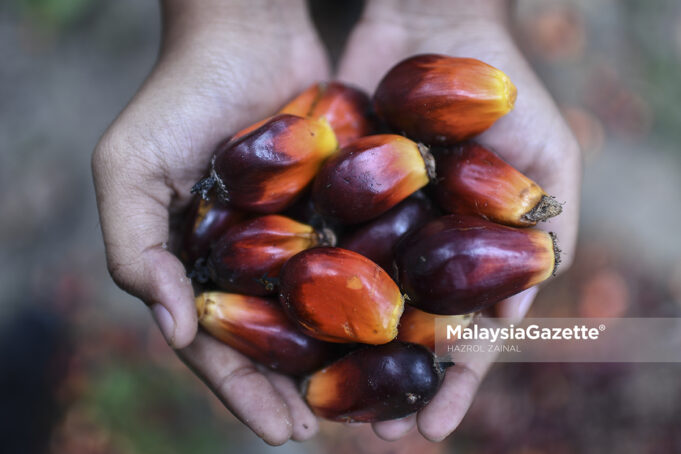The following article is submitted to the editorial of MalaysiaGazette by reader, Rizalman Hamid Kusnan.
With all the discrimination from the West against our palm oil and its related products, I just want to share the numerous health benefits it actually has to offer. I am a firm believer in all things natural and the benefits of palm oil are countless.
Palm oil plays an important role in meeting the world’s requirements for oils and fats. Oil palm is the most productive vegetable oil crop as compared to other oil crops (i.e., soybean, sunflower and canola) as it produces up to 4 tonnes of oil/ha/year.
This means oil palm requires less land to produce the same amount of oil as other vegetable oil crops. However, there are countless misconceptions about palm oil, the most common of which is that palm oil only consists of saturated fat, hence has adverse impact on human health.
The truth is that palm oil has a balanced fatty acid ratio. It consists of 50% saturated fats (palmitic acid and stearic acid) and 50% unsaturated fats (oleic acid and linoleic acid or commonly known as Omega-9 and Omega-6 fatty acids respectively).
Furthermore, it is often overlooked that palm oil contains many healthful phytonutrients such as vitamin E tocotrienols, provitamin A (also known as carotenoids), phytosterols, coenzyme Q10 and many others. These are powerful antioxidants that can help in disease prevention.
Carotenoids and red palm oil (RPO)
Crude palm oil (CPO) is the richest natural plant source for provitamin A carotenoids which includes alpha- and beta-carotene. It is these carotenoids that impart an orangey-red colour to crude palm oil.
CPO can be processed into various products such as palm stearin (solid fat), palm olein (liquid oil) or red palm oil. Red palm oil is obtained through a special refining technology using molecular distillation which retains almost 80% of the carotenoids and vitamin E present in CPO.
In fact, red palm oil contains 15 times more carotenoids than carrots, 300 times more than tomatoes and 44 times more than leafy vegetables.
Provitamin A carotenoids are fat-soluble pigments that require fat for conversion into vitamin A, which are then absorbed in the small intestine. A minimum of 5g of fat is required for an optimal absorption of carotenoids.
Supplementing oneself with red palm oil can be a cost-effective and practical way to address vitamin A insufficiency and associated health problems, namely visual impairment, blindness, stunting, anaemia, respiratory disease, increased risk of infection, and mortality owing to common childhood infections such as diarrhoea and measles.
Moreover, red palm oil can be used as salad dressing, cooking oil or as part of blended oil. Various studies found that regular consumption of one to two teaspoons of red palm oil can help ensure adequate intake of vitamin A in children as well as pregnant and lactating mothers.
High content of vitamin E tocotrienols
Vitamin E is a general name for tocopherols and tocotrienols which is naturally present in foods in various amounts.
Tocotrienols made up of about 70% and tocopherols 30% of the total vitamin E in palm oil as opposed to other vegetable oils such as soybean, corn, and sunflower oils which mostly consist of only tocopherol or may contain very little tocotrienols.
Adequate intake of vitamin E is essential to help protect our body from harmful effects of free radicals. In addition, palm tocotrienols possess other health benefits that are beyond the antioxidant properties including their beneficial effects in cancer, cardiovascular health, immune modulation, and neuroprotection.
Palm oil, heart disease and obesity
Saturated fatty acids are generally recommended to be reduced or eliminated from consumer diets in most dietary guidelines around the world. Half a century ago, consumption of saturated fatty acids was linked to increase in cholesterol resulting to an elevated risk of coronary heart disease.
However, a systematic review on dietary risk in 195 countries between 1990 and 2017 by The Lancet in 2019 found that a high-sodium diet was the largest culprit for cardiovascular disease. It is also reported in the same study that a diet high in trans-fat and red meat can also increase the risk of cardiovascular diseases.
After all, palm oil which originates from a plant is cholesterol-free as well as an excellent source of energy which can raise beneficial HDL (high-density lipoprotein) or “good” cholesterol.
As for obesity, its likely cause is multifactorial with factors such as unhealthy dietary habits, lack of daily activities and sedentary lifestyle playing important parts – and is not directly linked to palm oil consumption especially when the total fat intake is within the World Health Organization’s (WHO) recommended level (30% of total daily calorie intake).
No link to cancer
Last but not last, there is a need to refute allegations that palm oil promotes cancer due to its high palmitic acid content. Instead palmitic acid has been known to have an important role in human development and metabolism as it represents 20-30% of total fatty acids in membrane phospholipids and adipose triacylglycerols.
Moreover, palmitic acid can be found in dairy and meat products, cocoa butter, olive oil and even in human breast milk. Palm oil, for instance, is composed of palmitic, stearic, oleic and linoleic acid.
Many studies reported that antioxidants in palm oil have the potential to be an anti-cancer agent. Antioxidant-rich red palm oil is said to have a beneficial effect on the consequences of chemotherapy.
Versatile and healthy fat
In the production of solid fat-based food products such as margarine or shortening, liquid oil will be partially hydrogenated to make it more solid, thus increasing its oxidative stability. However, this process will generate a high amount of harmful trans-fats.
Trans-fats can be found in common products which use partially hydrogenated oils or fats as ingredients in their preparation. These ingredients can be in the form of margarine, shortening or frying fats.
Consequently, bakery products such as pastries, bread, cakes and biscuits are among foods which commonly contains high levels of trans-fat. Similarly, foods that are fried in partially hydrogenated oil will also contain trans-fat.
Palm oil has natural solid fat and therefore does not require partial hydrogenation. The products are thus free of harmful trans-fats.
As a matter of fact, palm oil is a healthier alternative to partially hydrogenated fat. Among the various sources of fats, palm oil is considered the top choice for restaurants and food manufacturers due to its versatility and diversity in application.
To counter the various misconception about palm oil, the Ministry of Plantation Industries and Commodities through the Malaysian Palm Oil Council (MPOC) rolled out the Malaysian Palm Oil Full of Goodness campaign to showcase the Malaysian palm oil’s healthfulness and versatility in January this year. As Malaysians, we should all support this campaign and help create more awareness on the benefits of palm oil.
Rizalman Hamid Kusnan
Editorial note: The views expressed are those of the author/contributor and do not necessarily represent the views of Malaysia Gazette.

















